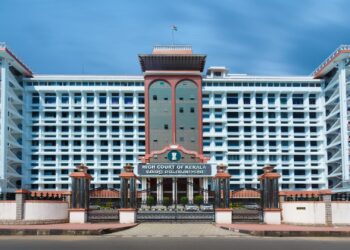The nine-judge Constitution Bench continued its second day of hearing on Wednesday regarding whether industrial alcohol should be considered ‘intoxicating liquor’ under state legislature powers. The court delved into the nuances of state and union list entries related to alcohol, focusing on the interpretation and interplay between Entry 8 List II (state regulation powers regarding ‘Intoxicating Liquor’) and Entry 52 List I (Union’s control over industries in public interest).
Senior Advocate Mr. Dinesh Dwivedi, representing the State of UP, addressed the bench’s query from the previous day about a direct clash between Entry 52 List I and Entry 8 List II. He emphasized that Entry 52 List I is activated only when a declaration is made regarding the industry under Entry 24 List II. This means that Entry 52 List I can only regulate industries that are already covered by Entry 24 List II, limiting its scope.
Mr. Dwivedi argued that the term ‘industry’ in Entry 52 List I should be interpreted in the same way as in Entry 24 List II. He pointed out that the source of power for Entry 52 List I is Entry 24 List II, and therefore, its scope cannot exceed what is mentioned in Entry 24 List II.
The Chief Justice of India (CJI) highlighted the clarity in the division of powers between the Union and states regarding the levy of excise duties on alcohol. The central government can collect excise duties on all manufactured goods except alcohol for human consumption, which falls under the states’ purview.
However, the CJI noted a lack of clarity in the division of substantive law-making powers regarding alcohol as an industry. Entry 8 List II mentions “Intoxicating Liquor,” but the state can only levy excise duties on alcohol fit for human consumption.
Mr. Dwivedi also questioned the decision in Synthetic Chemicals, arguing that it wrongly considered ‘industrial alcohol’ and ‘rectified spirit’ as synonymous. He emphasized that ‘industrial alcohol’ is not meant for human consumption, unlike ‘rectified spirit,’ which is fit for human consumption.
In conclusion, the bench will continue hearing the case, which was referred to a nine-judge bench in 2007. The case pertains to the interpretation of Section 18G of the Industries (Development and Regulation) Act, 1951, concerning the distribution and availability of certain products related to scheduled industries.
















